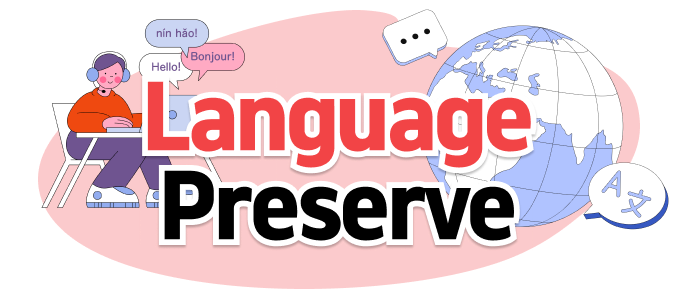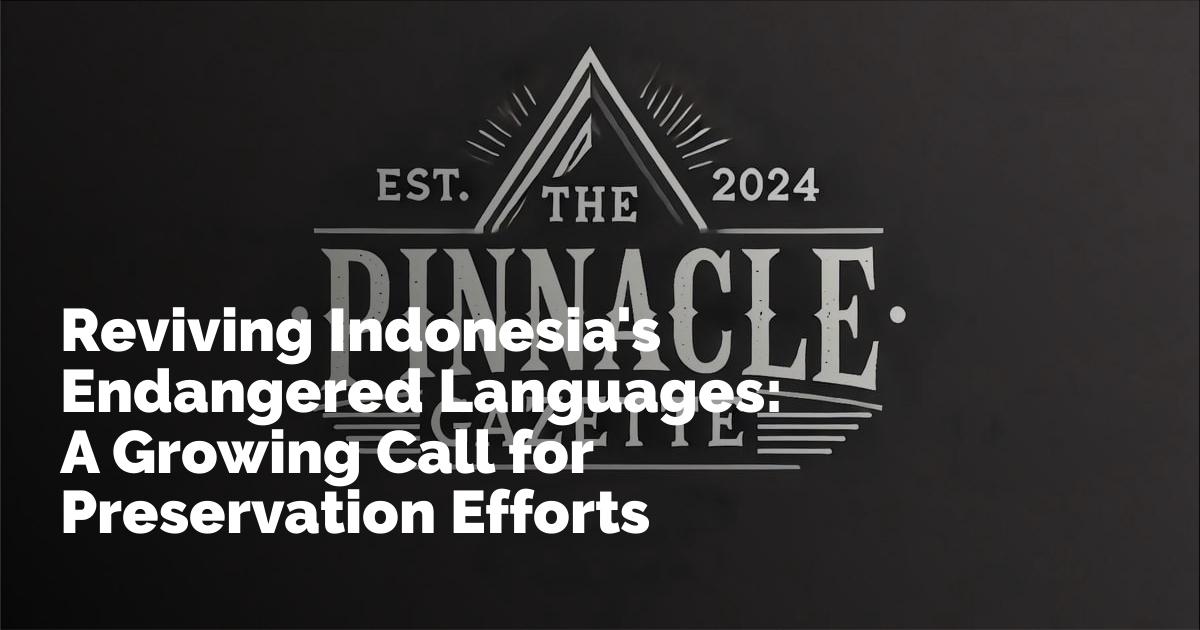Preservation Efforts Intensify For Indonesia's Endangered Languages
Connecting Indonesia's Cultural Heritage Through Language Preservation
Efforts to protect Indonesia's linguistic and cultural diversity have taken center stage as the nation moves to address falling usage of its diverse regional languages. Research has shown an alarming rate of language endangerment across the archipelago, prompting serious actions to mitigate this cultural loss.
Understanding the Threats to Local Languages
The Agency for Language Development and Fostering, known in Indonesian as Badan Pengembangan dan Pembinaan Bahasa, has identified roughly 26 regional languages as being at risk of extinction. This worrying trend is attributed mainly to the majority of current speakers being over the age of 20, and a noticeable decline in older generations communicating with children in these languages. As Hafidz Muksin, head of the Agency, elaborated during the International Mother Language Day event, these findings are based on vitality assessments of 113 regional languages initiated in 2015.
Classification of Regional Languages: Safe, Vulnerable, and Extinct
As part of their findings, the Agency has categorized 18 of the nation's languages as safe, while 27 are considered vulnerable, and five have already faded into extinction. This stratification underscores an urgent need for preserving the languages deemed endangered.
The Role of Home Language Use
Muksin stressed the importance of fostering the use of regional languages within homes and suggested integrating them into early education curriculums. The Indonesian Central Statistics Agency presents data from 2020 highlighting that only 73.8% of Indonesians use regional languages with their families. Through increased engagement in native dialects, there is hope of enhancing comprehension and embracing cultural heritage among students.
Benefits of Mother Language Instruction
Highlighting the educational benefits, Irsyad Zamjani, head of the Center for Standards and Education Policies, noted the positive impact of using mother tongue instruction. A 2021 study documented significant improvements in student participation when lessons were conducted in their first languages. This approach not only improved attendance but also boosted student engagement and participation—key metrics of effective educational processes. Students who learned in their mother languages consistently scored higher on literacy assessments than those taught solely in the Indonesian national language.
Governmental Support for Language Preservation
Indonesia's national policies, such as the National Education System Law and Presidential Regulation No. 63/2019, already endorse the use of local languages in educational contexts, emphasizing their importance alongside the national language. Nonetheless, Zamjani points out several ongoing challenges, including a lack of educational resources in regional languages, limited proficiency among educators, and the prevailing use of Indonesian, which poses learning barriers to younger audiences.
Strategies for Language Revitalization
Proposed solutions include comprehensive mapping of linguistic zones to tailor educational initiatives and strengthen the presence of local languages in schools. In collaboration with local governments, efforts to train teachers and develop bilingual teaching materials aim to surmount these challenges.
Academic Contributions to Cultural Preservation
Universities across Indonesia are also playing an instrumental role in language preservation. The Universitas Muhammadiyah Malang has launched "Ensiklopedia Tradisi-Tradisi Kampung" ('Encyclopedia of Village Traditions'), which showcases the work of students documenting local customs and traditions. This project not only facilitates academic involvement but also reignites interest among younger generations in exploring and reclaiming their cultural roots.
Through projects like these, schools aim to provide a foundation for further research on Indonesia's rich cultural heritage, emphasizing the emotional resonance these traditions hold for communities.
Cultural and Linguistic Diversity as National Identity
Cultural and linguistic diversity campaigns are increasingly seen as critical components of national identity. By fostering environments where regional languages can prosper, Indonesia ensures that its cultural tapestry remains vibrant, adaptable, and representative of its deep-rooted heritage.
The urgency of preserving Indonesia’s languages cannot be overstated. In embracing and valorizing linguistic diversity, these regional languages form vital frameworks through which cultural identities can be celebrated and understood.
출처 : Original Source

